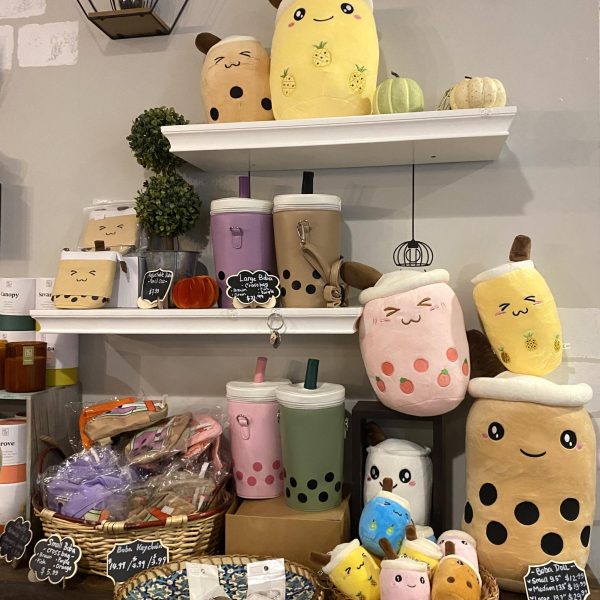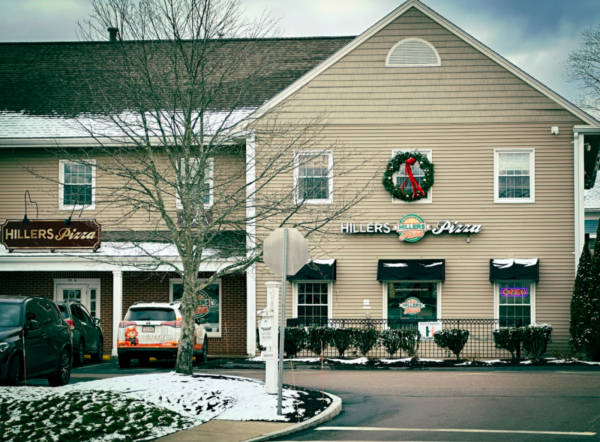Boy Scouts Accept Girls… Into Separate Troops
On October 11th, 2017, the Boys Scouts of America released a statement saying that by next year, they will begin integrating girls into some of their programs. And by next fall, BSA is opening their doors for younger girls, ages 7-10, to join the Cub Scouts, and older girls, ages 10-18, to join Boy Scouts.
“I think it’s always great to have gender and diversity integration,” said Hopkinton High School Librarian and AP Computer Science teacher Kirsten Fournier, “But since both groups are already so established, I’m just curious as to how they perceive what that might look like.”
It’s tough to understand the specifics of what the organization’s statement meant or how it is going to be carried out. But, the initial picture that seemed to pop into everyone’s heads was troops being made up of both boys and girls, working together.
Senior Helen Aghababian said she believed their intent was to be more inclusive.
“I feel like in the past couple of years they kind of got a bad rap for not doing that (being inclusive) as well. So I feel like they’re redeeming themselves.”
Yet a statement made by Chief Seattle Council Executive Michael Quirk makes it clear that that is not the case.
“It won’t be a coed den; it will be a den of all boys or all girls,” Quirk stated.
At a point where most believe that the BSA’s true purpose for making this decision was to make up for their severe decrease in participation over the past 10 years, this statement seems confusing. For an organization whose numbers would benefit from opening their doors to a larger audience, they’ve created a huge hurdle for new members.
If a girl did want to join, they would not be able to join one of their local Boy Scout troops as easily as a boy could. They would have to find an all girl’s troop that has already been formed, which may not sprout up in large numbers for the next couple of years, or they would have to create one themselves.
Whereas Quirk stated that the programs will be separate for boys and girls, the BSA’s original statement on their reasoning for allowing girls to join focused on convenience.
Quirk said, “Families today are busier and more diverse than ever. Most are dual-earners and there are more single-parent households than ever before, making convenient programs that serve the whole family more appealing.”
While the sentiment of this seems correct in theory, but in practice it doesn’t pan out. Parents could benefit immensely if they could drive their son and daughter to the same meeting. However, if troops are going to be separated by gender, they’re still going to be forced to bring their kids to different meetings in different places on different days.
In this case, each explanation from the BSA only creates more questions, and the real reason for the announcement still seems unknown.
Still, some students at HHS disagree.
“I don’t think that they had any intent,” senior Philip Hubbe said. “I think that the overall organization of Boy Scouts doesn’t have a lot of control over the individual troops. So I really don’t think that much is going to change…[it’s] not going to make her accepted necessarily among the group of guys.”
Hubbe expanded, “If you have a group of guys…to have that interrupted, it could be threatening to some people.”
While some question the decision to allow girls into the ranks on the grounds of it challenging the institution of Boy Scouts, many also challenge it on the grounds of not recognizing what Girl Scouts does for girls.
“I’m a pretty big proponent of girl power,” Fournier said. “So whatever sort of activities or extracurricular activities I can find for [my daughter] that promote that, I’m probably going to lean heavy in that direction.”
Along with this, she said that in Girl Scouts, her daughter participates in things like STEM activities, nature education, and community service, all things that she believes “helps girls learn and grow.”
Aghababian, a current Girl Scout, who is working on her project for her Gold Award, agrees.
“[Girl Scouts] definitely pushed me into more leadership roles when I was younger, which was something I don’t think school made me do.”
She also sees the interest girls may have with joining Boy Scouts. The Gold Award is one of the highest Girl Scout rankings, equivalent to the the boy’s Eagle Scout rank. She feels that the awards and rankings the Boy Scouts receive may get more recognition than the equivalent ranking of a Girl Scout, even when Girl Scouts work just as hard to get them.
One of the biggest critics of the recent decision was the Girl Scouts organization.
“We are confused as to why, rather than working to appeal to the 90 percent of boys who are not involved in BSA programs, you would choose to target girls,” president of the Girl Scouts of America Kathy Hopinkah Hannan stated.
The Girl Scouts have released multiple statements in recent months as the decision was being discussed among the BSA board members. Most of these statements call for the Boy Scouts to reveal why now is the time they decided to open their ranks to girls.
In a recent statement to ABC News, the GSA said, “The Boy Scouts’ house is on fire. Instead of addressing systemic issues of continuing sexual assault, financial mismanagement and deficient programming, BSA’s senior management wants to add an accelerant to the house fire by recruiting girls.”
The Boy Scouts have been the center of a number of scandals in the recent past, such as the exclusion of a transgender boy from Cub Scouts, sexual assault allegations, and a speech by President Trump at this year’s National Jamboree that was maligned by the media. For these reasons, the BSA has been accused of using this announcement as a way to stay afloat.
“I think that the statement makes sense, but… I think there are more prevalent reasons to start integrating girls,” junior Sam Cote said. “I think [it’s] probably [to be] a symbol of equality, rather than being strictly one gender or another, they want to contribute to loosening up on that sort of thing.”
“I think it’s great to incorporate Girl Scouts and Boy Scouts into the same activities so that they do have some crossover,” Fournier said. Although, as she brings up, she wouldn’t feel comfortable having her daughter to join “if the label ‘Boy Scout’ was still going to be used.”










